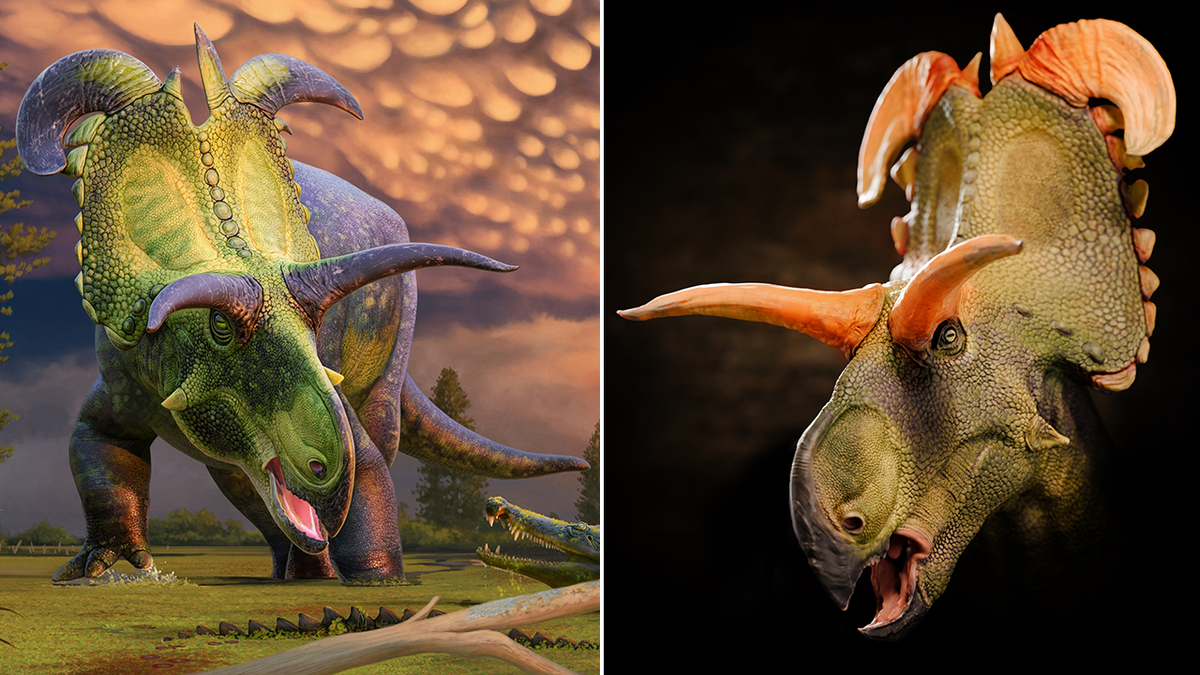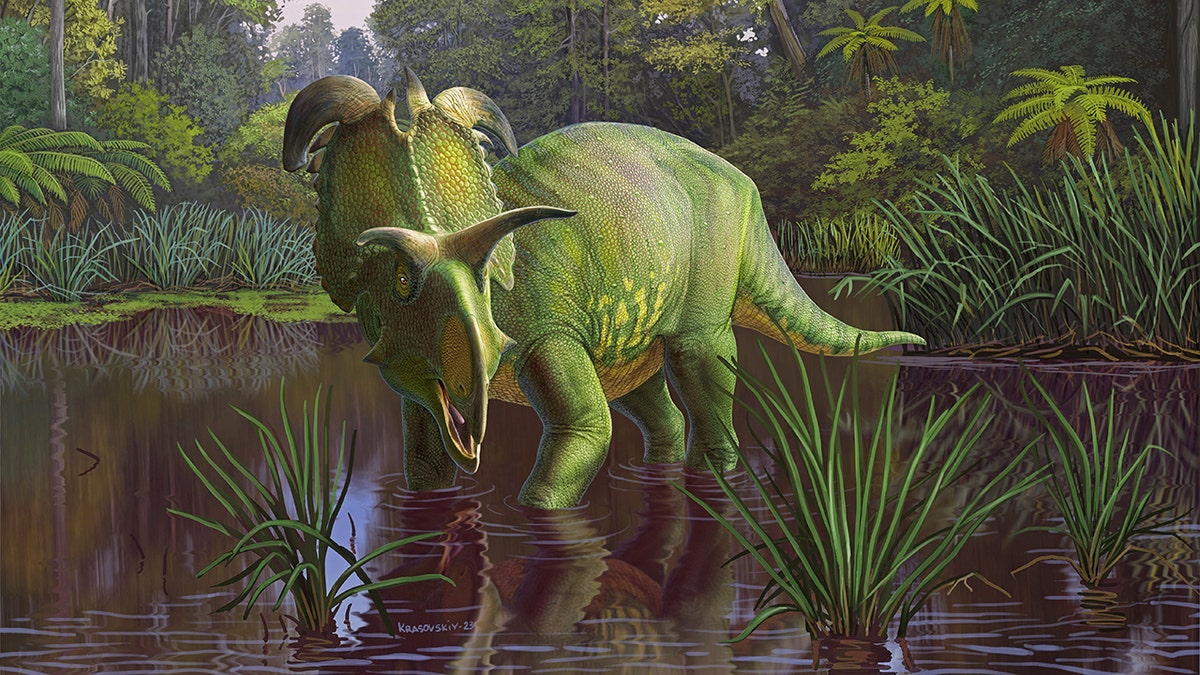Fox News Flash top headlines for June 21
Fox News Flash top headlines are here. Check out what's clicking on Foxnews.com.
A new plant-eating dinosaur species described as "remarkable" and among the "largest and most ornate ever found" has been discovered during an excavation in northern Montana, researchers say.
Lokiceratops rangiformis, whose discovery was first reported in the scientific journal PeerJ on Thursday, is now set to have a reconstruction of its skull go on display at the Natural History Museum of Utah.
"The dinosaur, excavated from the badlands of northern Montana just a few miles from the USA-Canada border, is among the largest and most ornate ever found, with two huge blade-like horns on the back of its frill," the Museum said in a statement.
"More than 78 million years ago, Lokiceratops inhabited the swamps and floodplains along the eastern shore of Laramidia," it added. "This island continent represents what is now the western part of North America created when a great seaway divided the continent around 100 million years ago."
THREE BOYS DISCOVER RARE T. REX FOSSIL IN NORTH DAKOTA

A reconstruction of Lokiceratops in the 78-million-year-old swamps of northern Montana. (Fabrizio Lavezzi/Evolutionsmuseet, Knuthenborg/Natural History Museum of Utah)
The museum says the dinosaur possesses "several unique features," including "the absence of a nose horn, huge, curving blade-like horns on the back of the frill – the largest ever found on a horned dinosaur – and a distinct, asymmetric spike in the middle of the frill.
"Lokiceratops rangiformis appeared at least 12 million years earlier than its famous cousin Triceratops and was the largest horned dinosaur of its time," the Museum also said. "The name Lokiceratops translates as ‘Loki’s horned face’ honoring the blade-wielding Norse god Loki. The second name, rangiformis, refers to the differing horn lengths on each side of the frill, similar to the asymmetric antlers of caribou and reindeer. "
NEW RESEARCH ESTIMATES WHEN FIRST WARM-BLOODED DINOSAURS ROAMED THE EARTH

A rendering of the skull of Lokiceratops. The dinosaur's reconstructed skull is set to go on display at the Natural History Museum of Utah. (Andrey Atuchin/Fabrizio Lavezzi/Evolutionsmuseet, Knuthenborg/Museum of Evolution in Maribo, Denmark/Natural History Museum of Utah)
The fossil remains of the dinosaur were discovered in 2019 in the Kennedy Coulee region of Montana before being restored and put on display at the Museum of Evolution in Maribo, Denmark.
A reconstruction of the skull and a full-size sculpture will now be available for viewing at the Natural History Museum of Utah in Salt Lake City for the next six months, according to the museum.

An artist's impression of newly identified Cretaceous Period horned dinosaur Lokiceratops, whose fossils were unearthed in the badlands of Montana. (Reuters/Sergey Krasovskiy)
CLICK HERE TO GET THE FOX NEWS APP
"The behemoth is a member of the horned dinosaurs called ceratopsids, a group that evolved around 92 million years ago during the Late Cretaceous, diversified into a myriad of fantastically ornamented species, and survived until the end of the time of dinosaurs," it added.


